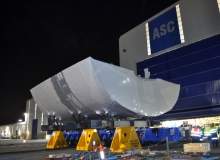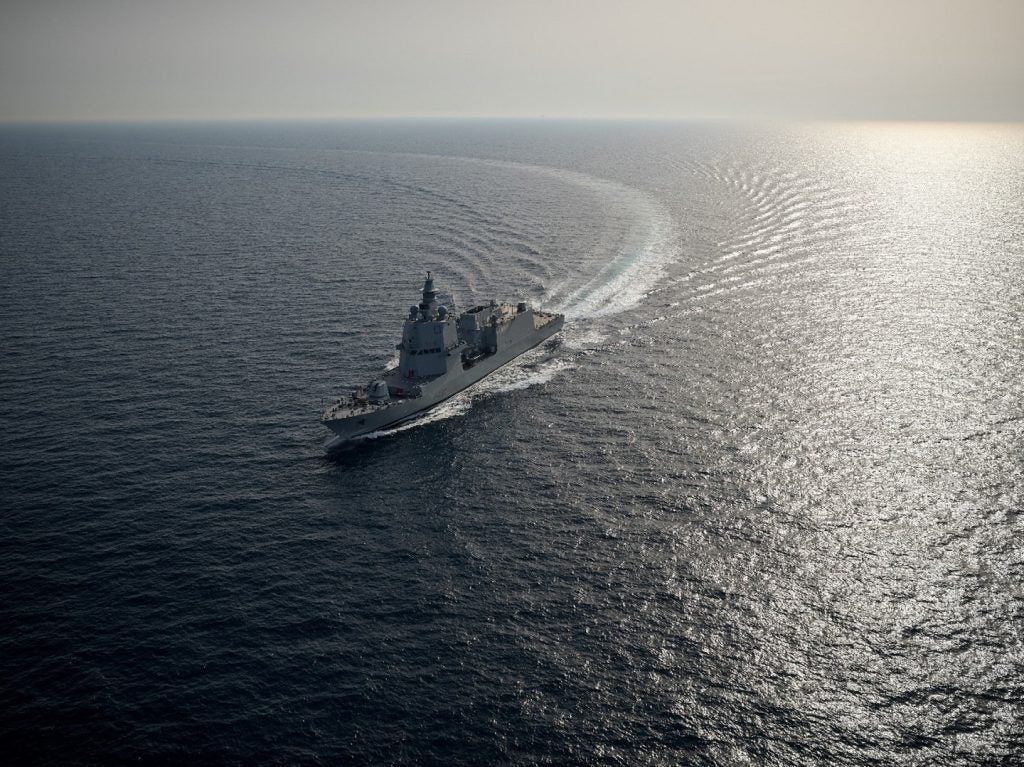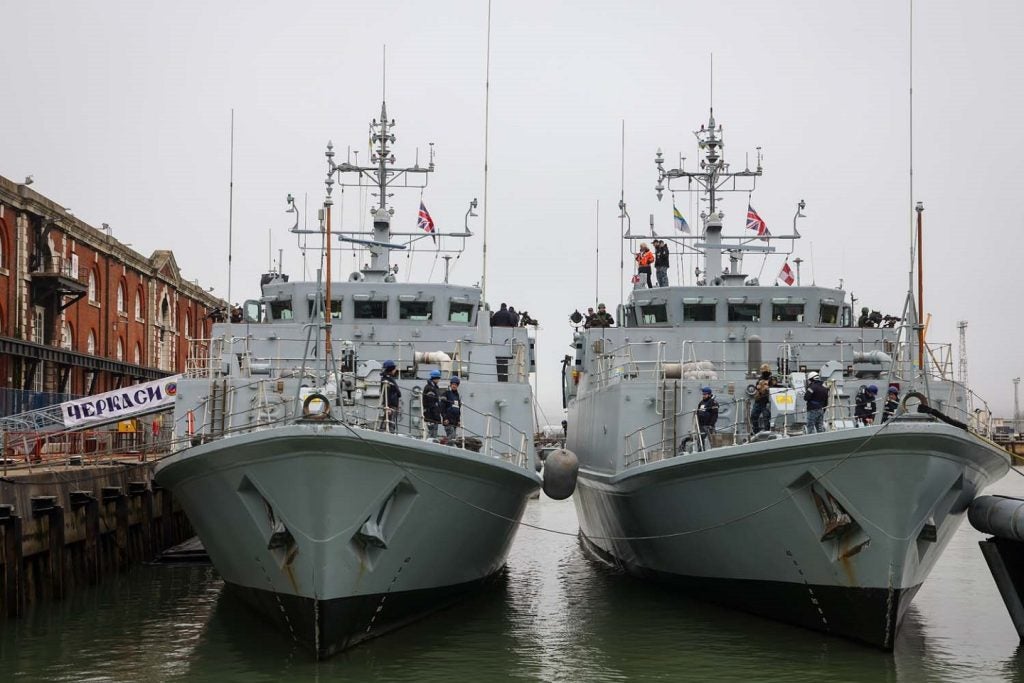
As the weight of military procurement continues to slowly shift from west to east, the Asia Pacific region is becoming an increasingly important strategic area. The region’s economic giants, India and China, are investing heavily in modern naval fleets, including plans for the development or acquisition of aircraft carriers and nuclear submarines in the latter.
Meanwhile, the US is expanding its presence in the Pacific in an attempt to maintain its influence in the region. The most recent US move to reinforce its Asia Pacific alliances is its decision, announced in November 2011, to station 2,500 marines in Australia, along with deals to guarantee US shared use of Australian naval bases.
It was a move that provoked a strong reaction from China, which accused the US of stoking military tensions in the region. "It may not be quite appropriate to intensify and expand military alliances and may not be in the interest of countries within this region," said Chinese Foreign Ministry spokesperson Liu Weimin.
Australia’s naval weaknesses
As a country flanked by the Indian and Pacific oceans and thoroughly entangled in the squabbles of two military superpowers, no one would deny that a well-supported modern navy is vital to safeguarding Australia’s future security.
How well do you really know your competitors?
Access the most comprehensive Company Profiles on the market, powered by GlobalData. Save hours of research. Gain competitive edge.

Thank you!
Your download email will arrive shortly
Not ready to buy yet? Download a free sample
We are confident about the unique quality of our Company Profiles. However, we want you to make the most beneficial decision for your business, so we offer a free sample that you can download by submitting the below form
By GlobalDataHowever, the Royal Australian Navy (RAN) has been beset by technical problems and manpower deficiencies in recent years, leading many Australian observers to wonder if the RAN is fit for purpose. After HMAS Kanimbla, one of the fleet’s three main amphibious support ships, lost engine power and drifted towards the rocks of Sydney Harbour in September 2010, Australian opposition defence spokesperson David Johnston went so far as to describe RAN as "a basket case".
See Also:
In 2011 it was revealed that in the first half of the year, an astonishing 38 of the RAN’s 54 vessels were at some point unavailable due to faults, upgrades or even crew shortages. The list of out-of-action vessels included the fleet’s six Collins-Class submarines, which were available for only 32% of 2011, as well as eight of RAN’s 12 frigates standing at lower levels of readiness due to a lack of crew.
"I want to know who is accountable for this multibillion-dollar mess and how we have come to this," Johnston told The Australian in February 2011. "Virtually all force element groups are about 70 to 80% laid up through maintenance and are non-operational. Clearly this is not good enough."
In order to overcome the deficiencies in Australia’s navy, the government is pushing ahead with a number of large-scale naval construction programmes and looking into ways to improve the infrastructure of naval bases and shipyards, to ensure a new and improved RAN fleet can be delivered and supported in the future.
Air warfare destroyer construction: building RAN’s future
The most immediate major improvement to RAN’s capabilities will come in the form of three Hobart-Class air warfare destroyers (AWDs). The vessels are based on a design by Spanish shipbuilding firm Navantia which has proven to be effective for the Spanish Navy’s F100-Class air defence frigates.
Described by Minister for Defence Materiel Jason Clare as "Australia’s biggest shipbuilding project", the A$8bn AWD project is being overseen by the Air Warfare Destroyer Alliance (made up of the Australian Defence Materiel Organisation, ASC and Raytheon) and built at ASC’s naval shipyard in Osborne, South Australia.
AWDs are being put together through a block build system, with 90 massive steel blocks due to be delivered to the ASC shipyard by contractors in Australia and abroad during the project’s timeline. The first keel block for HMAS Hobart, the project’s lead vessel, was delivered in August 2011, with blocks coming in from BAE Systems’ Williamstown, Victoria shipyard and Forgacs Group’s shipyard in Newcastle, New South Wales, as well as sites in Spain and the UK, since then.
AWD construction issues
ASC has been ramping up recruitment at its Osborne shipyard (which is part of the Techport Australia naval industry hub) to maintain the pace on the AWD project, recruiting 100 new employees in 100 days in the first half of 2011.
"Securing 100 employees in 100 days is a significant achievement as we are not only recruiting in a tough skills market but also competing with the growing local resources sector for talent," said ASC’s general manager for the AWD project Paul Gay.
His concern about skills competition from the resource industry has been echoed by other naval sectors and could be a major factor contributing to the manpower shortages being experienced by RAN and the naval shipbuilding sector.
Another problem facing Australian naval shipyards is one of capability and capacity. The AWD project was initially planned to take place exclusively at three Australian sites, but delays primarily attributed to faulty keel block construction at BAE’s Williamstown shipyard have prompted the Department of Defence to outsource construction of some blocks, including three vital sonar blocks, to a Navantia site in Spain and a UK shipyard.
"Adding extra work to Australian shipyards at this time would create additional pressure on current work, potentially creating a range of risks for the project," said an AWD Alliance spokesperson earlier this month. Despite the government’s clear desire to nurture Australia’s domestic naval shipbuilding sector with major orders, a lack of local capacity and expertise seems to be compromising that goal.
Naval bases: supporting the fleet
Just as Australia is forced to collaborate heavily with foreign countries to ensure its new vessels are as advanced as possible and delivered on time, it’s an inescapable fact that the country will continue to rely on US military support for many years to come. If Australia is to reach a point where it can confidently provide its own maritime security, it’s clear that some restructuring of naval bases and facilities will have to take place, both to support the fleet and to foster a new wave of trained personnel.
A recently published Force Posture Review progress report has recommended a general shift of naval capability away from the HMAS Kuttabul naval base (Fleet Base East) in Sydney to areas that are seen as more strategically important. The first is HMAS Stirling (Fleet Base West) near Perth on Australia’s west coast. Although HMAS Stirling is already RAN’s largest naval base with 2,300 service personnel and the capacity to accommodate around half the fleet, its role looks set to grow in importance in terms of training and vessel maintenance.
Stirling’s areas of expertise are also well-placed to address some of RAN’s major concerns and priorities for the future. It is a major practical training hub for cadets being funnelled through from the navy’s main training facility at HMAS Cerberus near Melbourne, Victoria.
"Training is a growth industry here," said HMAS Stirling’s commander, Capt. Brett Dowsing, in a 2010 milestone statement. "We are receiving our sailors from HMAS Cerberus at a much younger age, at a time when we are trying to get them to sea quicker."
In the same statement, Dowsing noted that the base had achieved some success in retaining its sailors at a time when many are discharging from the navy to pursue careers in Australia’s lucrative mining and resources industry, a problem that seems to be a persistent thorn in the side of both the navy and naval shipbuilders in the country.
Through the expansion of submarine facilities (including a submarine escape training facility, one of only six in the world) and the addition of the ASC West submarine maintenance facility (which maintains RAN’s Collins-Class submarines), HMAS Stirling has also become the focal point for Australia’s submarines. This capability will likely see Stirling increase in importance as submarines become an ever greater part of Australia’s maritime defence strategy, especially as the country’s Future Submarine Project (SEA 1000) looks to develop or acquire 12 advanced submarines to add to the fleet, with construction slated to begin around 2016.
North by north-west: repositioning Australia’s bases
The Force Posture Review has recommended an increased focus on HMAS Stirling and the Indian Ocean partly because of the ongoing offshore resource boom in the waters off Australia’s western and north-western coastlines, which includes massive oil and gas projects like Chevron‘s Gorgon fields and the Browse basin being explored by Royal Dutch Shell. Fleet Base West’s location in Western Australia means it is well positioned to help safeguard these vital assets to the country’s economy.
The report also recommends that naval base priority be shifted on Australia’s east coast, again moving towards the country’s northern regions, away from Sydney. Under the review’s recommendations, Fleet Base East would be de-prioritised to a maintenance facility and cruise ship terminal, while a new base for Australia’s east coast naval power would be built further north in the state Queensland to command a more powerful position in the South Pacific.
Brisbane was noted as a potential site for a new naval base in the region because of its nuclear powered warship-rated port and its established industrial infrastructure for maintenance and repair. Similarly, the Force Posture Review also proposed large-scale expansions of RAN’s existing bases in Cairns and Darwin on Australia’s north and north-east coast, a further reflection of the country’s shifting naval priorities and the potentially fragile relations with some of its northern neighbours.





